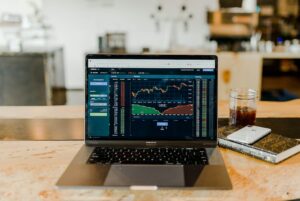Understanding Technical Analysis in Forex Trading: A Beginner’s Guide
Forex trading is a complex and dynamic market, where currencies from around the world are bought and sold. To navigate this market successfully, traders employ various strategies and tools to make informed decisions. One such tool is technical analysis, which allows traders to analyze past price patterns and predict future movements. In this beginner’s guide, we will delve into the world of technical analysis in forex trading.
What is Technical Analysis?
Technical analysis is the study of historical price data, charts, and indicators to identify patterns and trends in the market. Traders who use technical analysis believe that past price movements can help predict future price movements. It is important to note that technical analysis is not concerned with the fundamental factors that drive the market, such as economic indicators or news events. Instead, it focuses solely on price action.
Key Principles of Technical Analysis
There are a few key principles that underpin technical analysis:
1. Market Discounts Everything: The basic premise of technical analysis is that all relevant information about a currency pair is already reflected in its price. This includes economic data, geopolitical events, and market sentiment. Therefore, traders should focus solely on analyzing price action.
2. Price Moves in Trends: Technical analysts believe that prices move in trends, either up, down, or sideways. By identifying these trends, traders can determine the direction in which the market is moving and make better trading decisions.
3. History Repeats Itself: Technical analysis is based on the assumption that history tends to repeat itself. Certain patterns and formations that have occurred in the past are likely to occur again in the future. Traders use these patterns to anticipate future price movements.
Tools of Technical Analysis
Technical analysis involves the use of various tools and indicators to analyze price action. Here are some commonly used tools:
1. Candlestick Charts: Candlestick charts are graphical representations of price movements. Each candlestick represents a specific time period, such as a day or an hour. Traders analyze the shape and color of the candlesticks to identify patterns and trends.
2. Support and Resistance Levels: Support and resistance levels are price levels at which the market tends to stall or reverse. Support levels are below the current price, while resistance levels are above it. Traders use these levels to determine potential entry and exit points.
3. Moving Averages: Moving averages are used to smooth out price data and identify trends. They are calculated by averaging the price over a specific time period. Traders use moving averages to determine the overall direction of the market.
4. Oscillators: Oscillators are indicators that oscillate between two extreme levels, indicating overbought or oversold conditions in the market. Popular oscillators include the Relative Strength Index (RSI) and the Stochastic Oscillator.
Limitations of Technical Analysis
While technical analysis can be a valuable tool in forex trading, it is not without its limitations. Here are a few drawbacks to consider:
1. Subjectivity: Technical analysis relies on the interpretation of charts and indicators, which can be subjective. Different traders may interpret the same chart differently, leading to conflicting trading decisions.
2. Lagging Indicators: Many technical indicators are based on past price data, which means they are lagging indicators. They may not provide timely signals for entering or exiting trades.
3. Not Foolproof: Technical analysis is not a foolproof method for predicting market movements. While it can provide valuable insights, it cannot guarantee accurate predictions.
Conclusion
Technical analysis is a powerful tool in the forex trader’s toolbox. By studying historical price data and analyzing charts and indicators, traders can gain valuable insights into market trends and patterns. However, it is important to remember that technical analysis is just one piece of the puzzle. Traders should also consider fundamental factors and market sentiment to make well-informed trading decisions. With practice and experience, beginners can develop their skills in technical analysis and improve their chances of success in forex trading.






